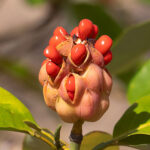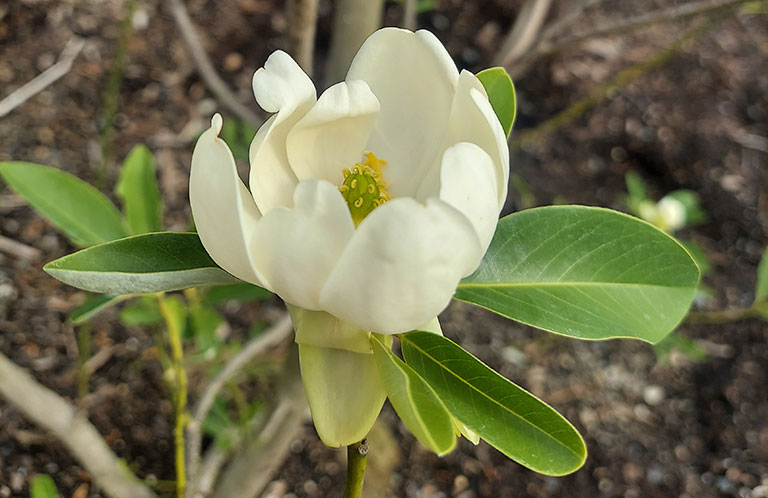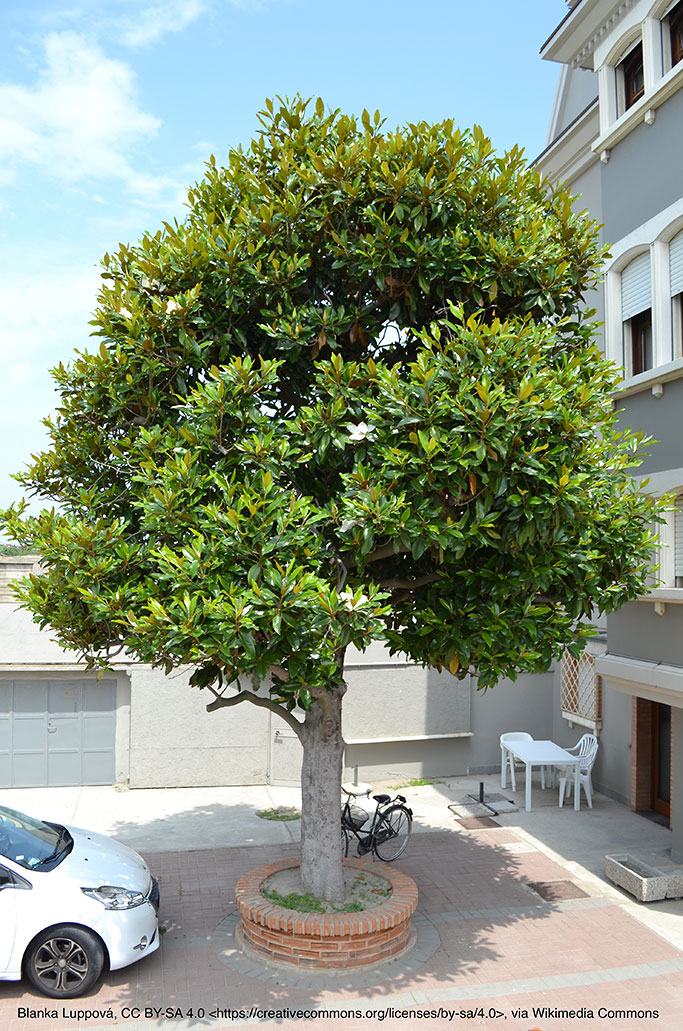Sorting Out Sweetbay Magnolia

Sweetbay magnolia (Magnolia virginiana) is a native tree species found primarily in the southeastern United States. It is renowned for its graceful form, fragrant flowers, and glossy green foliage, making it a beloved choice for gardens throughout its range.
Sweetbay magnolia is a medium-sized tree that averages heights of 10-35 feet, depending on growing conditions and variety. Its narrow, oval-shaped leaves are dark green on top and silver-gray underneath, creating a striking contrast when rustled by the breeze. In late spring to early summer, the tree produces creamy white, lemon-scented flowers that stand out against the foliage. These are followed by cone-like fruits that attract birds and wildlife.


In addition to its horticultural appeal, Sweetbay Magnolia holds cultural significance for indigenous peoples, who traditionally used parts of the tree for medicinal and ceremonial purposes.
Sweetbay magnolia thrives in moist, acidic soils and partial shade but can adapt to a range of conditions, including clay and loamy soils. Its association with waterways has earned it the nickname "Swamp Magnolia."
A versatile tree that can be used in various landscaping applications, it works well as a specimen tree, providing year-round interest with its foliage, flowers, and fruit. Its moderate size makes it suitable for both small and large gardens, where it can serve as a focal point or backdrop. Additionally, it can be planted near water features or in rain gardens, where its affinity for moisture is an asset.
Sweetbay is often overlooked in favor of its popular cousin, the southern magnolia. But, as the name implies, the southern magnolia can be affected by the mercurial Michigan weather. You could miss a whole season of blooms if the conditions are not right. But the Sweetbay avoids this with a later bloom.
In conclusion, Sweetbay magnolia is an enchanting plant that deserves a place in any garden or landscape design. So why not consider adding one of these captivating trees to your plantings and experience their unique charm firsthand?
